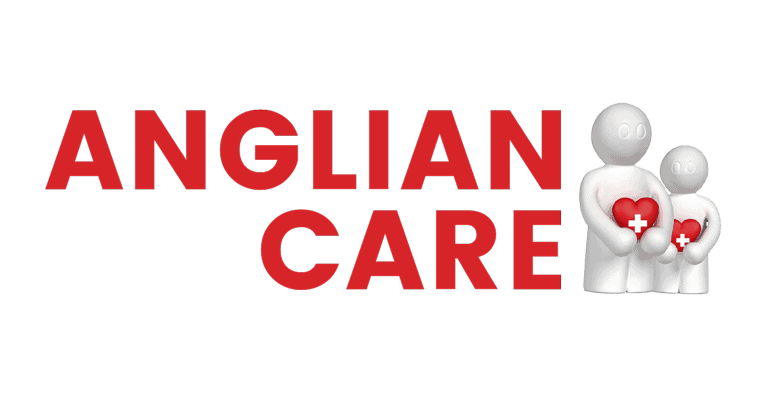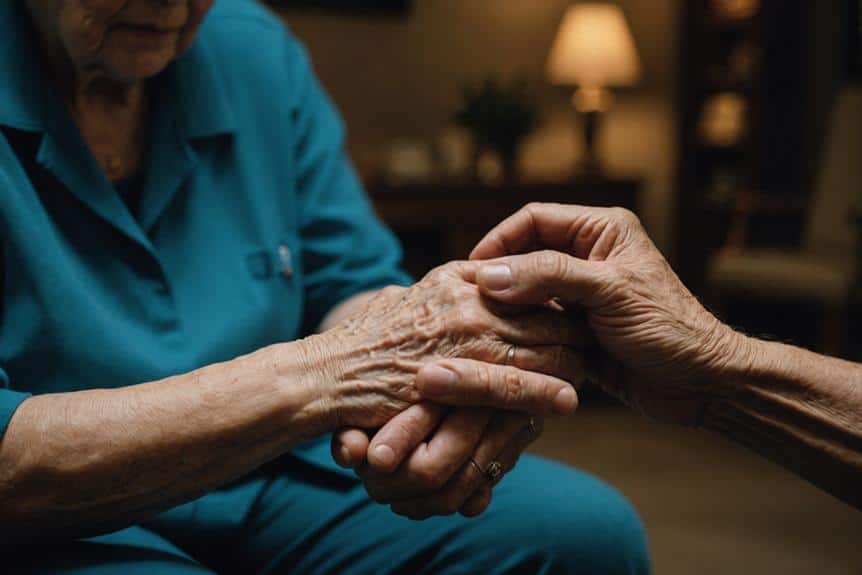To recognize signs of elder abuse, look for unexplained injuries like bruises or cuts, as these can indicate physical harm. Behavioral changes, such as withdrawal or increased anxiety, may suggest emotional abuse. Neglect can show as poor hygiene or unsafe living conditions, while sudden financial changes, like large withdrawals, might point to exploitation. Additionally, unexplained health issues or mood swings could be signs of sexual abuse. Being aware of these indicators and understanding the types of abuse is essential for intervention and support. There's more to uncover regarding how to protect vulnerable individuals effectively.
Understanding Elder Abuse
Understanding elder abuse is vital for protecting vulnerable individuals. Many older adults, especially those who are frail, isolated, or dependent on caregivers, are at a markedly higher risk. The responsibility of safeguarding falls on caregivers and healthcare professionals to guarantee that these individuals are treated with dignity and respect. Caregivers have a responsibility to guarantee the safety and well-being of those they care for. It's important to respect elder rights, which include the right to live free from abuse and neglect. Caregivers should also be mindful of their actions and how they might impact the older adults in their care.
Common Signs of Elder Abuse
- Unexplained injuries like bruises, cuts, or fractures
- Behavioral changes such as withdrawal, anxiety, or fearfulness around caregivers
- Neglect, which may present as poor hygiene or unsafe living conditions
- Sudden changes in financial situations, like large withdrawals or missing money
- Signs of sexual abuse, including unexplained STDs or mood fluctuations
When you notice unexplained injuries, it's crucial to reflect on whether they result from accidents or potential physical abuse. Additionally, if a senior shows significant behavioral changes, such as becoming anxious or withdrawn, it can indicate emotional abuse. Neglect is often visible too; for instance, if a senior is living in poor hygiene conditions or appears malnourished, this could signal a lack of proper care.
Financial abuse can be particularly insidious. If you see sudden, large withdrawals or unusual transactions, it's worth investigating further. Finally, keep an eye on any signs of sexual abuse, as they can be subtle but alarming.
Types of Elder Abuse
Elder abuse comes in several forms, and it's essential to recognize each type. You might encounter physical abuse, where someone causes pain or injury, or emotional abuse, which can lead to serious psychological harm. Additionally, financial exploitation and neglect can also occur, affecting an elder's well-being and safety in significant ways.
Physical and Emotional Abuse
How can you tell if an elderly person is suffering from physical or emotional abuse? Recognizing the signs can be essential for their safety and well-being. You might notice physical injuries, such as unexplained bruises, broken bones, or burns, which can indicate mistreatment. These injuries often come alongside signs of neglect, like poor hygiene or untreated medical conditions.
Emotionally, you may see a decline in the individual's mental health. Look for signs of emotional distress, like withdrawal from social activities, increased anxiety, or depression. Often, these changes stem from verbal threats or coercive behavior by caregivers.
Here are some key indicators to watch for:
- Unexplained physical injuries
- Sudden changes in behavior or mood
- Signs of fearfulness around certain individuals
- Isolation from friends and family
- Neglected personal hygiene or health issues
Being attentive to these signs can help you identify potential abuse, allowing you to take necessary actions to protect the elderly person in your life. Always remember that both physical and emotional abuse can lead to long-term consequences, affecting their overall quality of life.
Financial Exploitation and Neglect
Financial exploitation and neglect are serious forms of elder abuse that can have devastating effects on vulnerable individuals. You might notice signs of financial exploitation when there are unauthorized changes in banking habits, such as sudden withdrawals or unusual transactions. These can indicate that an elder is at risk of financial scams, exploiting their vulnerability.
Neglect, on the other hand, often manifests through a lack of necessary care, leading to physical harm, malnutrition, or unsafe living conditions. Signs like bedsores or unclean environments signal that an elder isn't receiving the attention they need. Unfortunately, neglectful caregivers may also mismanage funds that should be used for the elder's care, resulting in both physical and financial harm.
It's important to recognize that nearly 50% of individuals with dementia experience some form of abuse, including financial exploitation and neglect. This highlights the necessity for vigilance among caregivers and family members. By staying aware of these signs, you can help protect your loved ones from the dual threats of exploitation and neglect, ensuring they receive the care and respect they deserve.
Risk Factors for Elder Abuse
Another factor is dependency on caregivers. Many older adults rely on family members or professionals for assistance. Unfortunately, when caregivers experience stress, substance abuse, or family dysfunction, it can increase the likelihood of mistreatment. The considerable responsibilities of caregiving can lead to physical exhaustion and emotional challenges, further contributing to the risk of mistreatment. Understanding caregiver challenges is essential in recognizing these dynamics.
Several other risk factors contribute to elder abuse:
- Older adults over the age of 80 are particularly vulnerable.
- Women are more likely to experience severe forms of abuse.
- Nearly 50% of individuals with dementia face some form of abuse.
- Living alone considerably increases the risk of social isolation.
- Caregiver stress can lead to neglect or emotional abuse.
Recognizing these factors can help you identify those at risk and take appropriate action. Awareness of these elements is essential. By understanding the dynamics of caregiver relationships and the impact of social isolation, you can be better equipped to protect older adults from potential abuse. It's important to foster connections and provide support, ensuring that older adults feel valued, safe, and cared for in their communities.
Reporting and Seeking Help
If you feel that abuse is occurring, report your concerns to Adult Protective Services (APS). APS operates in every state and is dedicated to investigating and addressing allegations of abuse. Remember that medical professionals and trusted individuals have legal responsibilities to report suspected abuse, so seeking their guidance can also be beneficial. Whistleblowing in such situations is essential, as it acts as an early warning system to protect vulnerable individuals from further harm, ensuring that their safety and dignity are prioritized in the care environment whistleblower protections.
Before you make a report, document any evidence of abuse. Take photographs or jot down notes about what you've observed. This information can be significant when it comes to ensuring the elder's safety and supporting your claims.
Engaging with support networks is another important step. The Eldercare Locator can connect you with local services and resources tailored to the needs of older adults. These support networks can provide assistance not just to the elder but also to you as a caregiver or concerned individual.
Reporting suspected elder abuse can feel overwhelming, but remember that your actions can make a difference. By taking the right steps, you're not only fulfilling your legal responsibilities but also advocating for the safety and well-being of vulnerable individuals who may not be able to speak up for themselves.
Resources for Prevention and Support
When it comes to preventing and responding to elder abuse, knowing where to find resources is essential. You can access support services like the Eldercare Locator and Adult Protective Services to guarantee that older adults receive the help they need. Additionally, community organizations provide educational materials that raise awareness about warning signs and empower families to take action.
Available Support Services
Identifying and addressing elder abuse can feel overwhelming, but numerous support services are available to help you navigate these challenges. Understanding where to turn can make a significant difference in ensuring the safety and well-being of older adults.
Here are some local resources you can rely on:
- Eldercare Locator: Connects you with local support services for older adults experiencing abuse or neglect.
- Adult Protective Services (APS): Available in every state, APS allows you to report suspected elder abuse and provides assistance to victims.
- National Domestic Violence Hotline: Offers 24/7 confidential support and guidance at 1-800-799-7233, including for elder abuse cases.
- Community Organizations: They often provide free educational materials and advocacy resources to help families recognize signs of elder abuse.
- Institute on Aging's Friendship Line: This service offers emotional support and crisis intervention for individuals aged 60 and older, combating social isolation, a major risk factor for elder abuse.
Reaching out to these support services can empower you to take action and protect those who are vulnerable. Remember, you're not alone in this journey.
Educational Materials Access
Community programs often offer educational workshops and seminars designed to teach families and caregivers about prevention strategies and warning signs. These hands-on experiences allow you to interact with experts and ask questions, deepening your understanding of the topic.
Additionally, online resources, such as videos and articles, can enhance your knowledge of elder rights and protections against abuse. These resources are easily accessible and can be reviewed at your own pace, ensuring you have the information needed to recognize potential issues.
Joining organizations focused on elder advocacy can also provide exclusive access to educational materials and support networks. This ongoing learning and assistance can empower you to play an active role in preventing elder abuse in your community. By utilizing these resources, you can make a significant difference in the lives of vulnerable older adults.
Community Awareness Initiatives
Here are some key components of community awareness initiatives:
- Educational Workshops: Local organizations host events that teach community members about elder abuse signs and prevention.
- Collaboration with Professionals: Many initiatives partner with law enforcement and healthcare professionals to create reporting resources.
- Social Media Campaigns: Online platforms raise awareness and encourage people to report suspicious behavior.
- Ageism Awareness Day: This annual event promotes respect for older adults, enhancing community engagement in prevention efforts.
- Support Resources: Tools like the Eldercare Locator and local Adult Protective Services offer guidance for those wanting to help.





